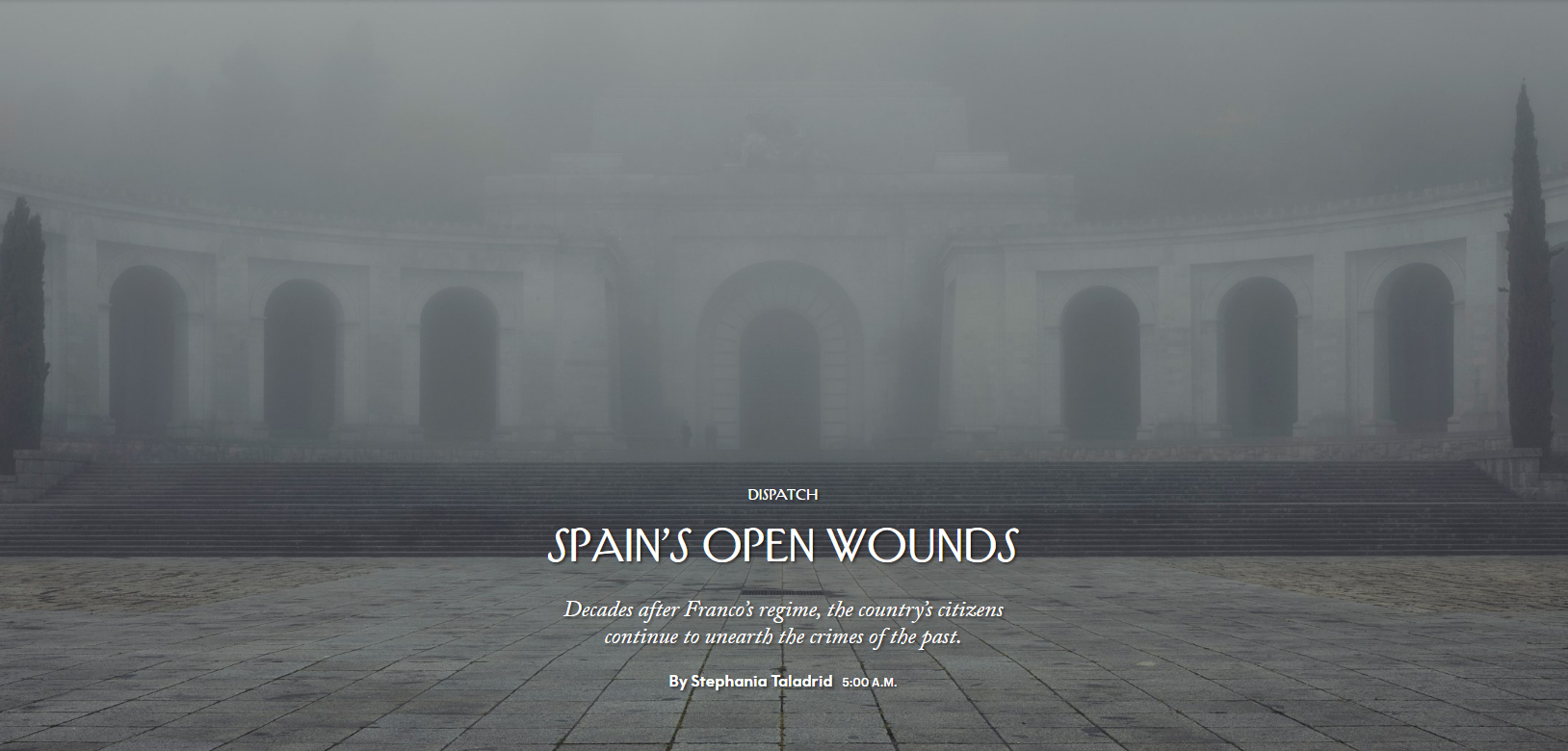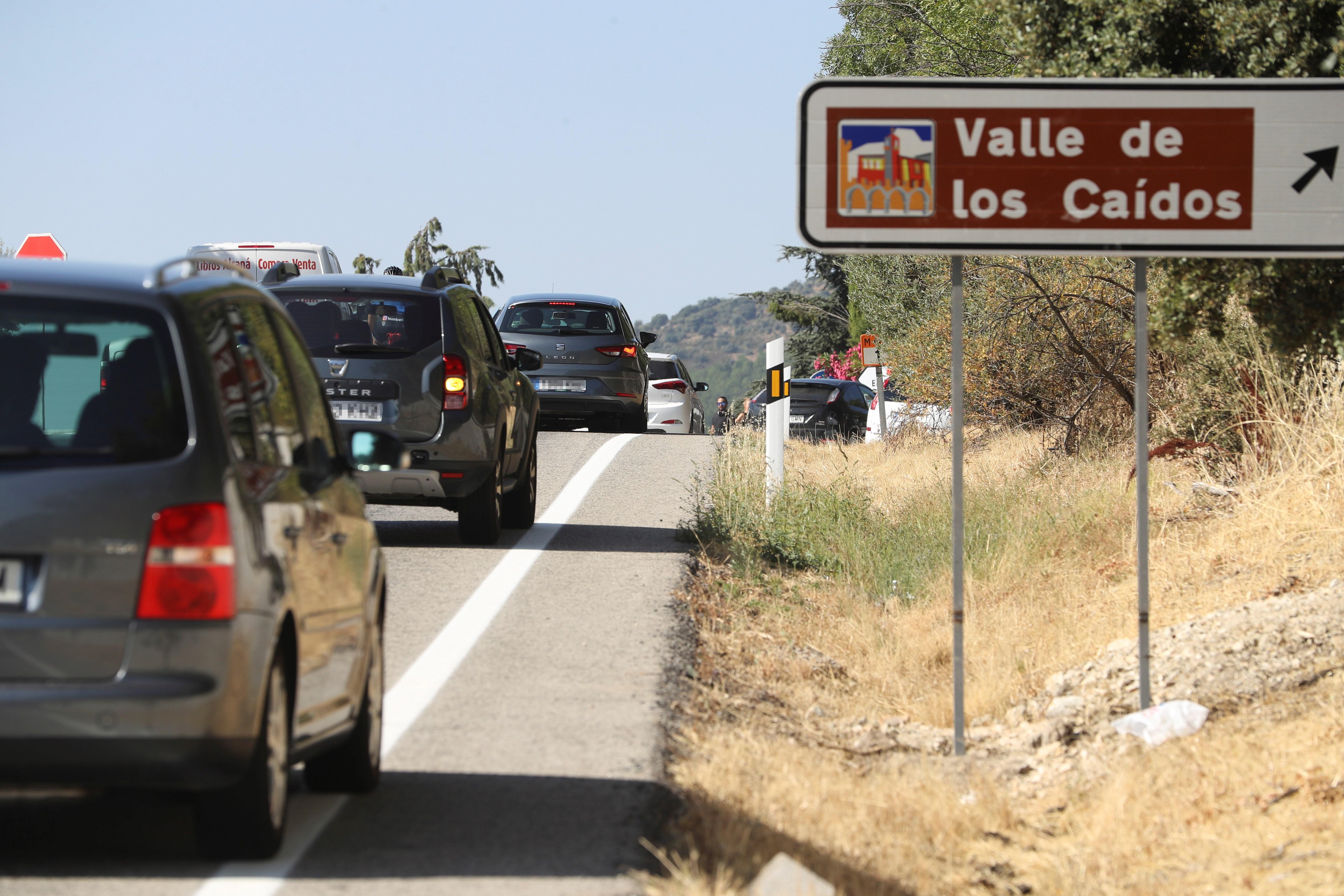The New Yorker, one of the world's most important magazines covering politics and culture, has published a hard-hitting report on the continued existence of Francoism in Spain. "Spain's open wounds. Decades after Franco’s regime, the country’s citizens continue to unearth the crimes of the past," runs their title and lead. The message is that the 1978 transition to democracy didn't deal with the issues left by the Civil War and the decades of dictatorship, but tried to slam the book shut and move on without confronting the past.
The reporter notes that generations were taught with a Franco view of the past: justifying the coup that had led to the Civil War and the dictatorship, claiming that both sides had equal responsibility for the war's atrocities. 500,000 died during the three years of conflict. "Even today, historical reckoning is often seen as an undesirable subject", they write: "For the most part, Spanish governments have remained on the sidelines of these debates".

The US magazine expresses surprise that a foundation in honour of the dictator Franco should remain fully active in Madrid. Indeed they visit its headquarters in a "mustard-colored house" nearly Real Madrid's Bernabéu stadium: "Nothing on the outside of the complex suggests a Francoist stronghold. On the inside, however, the dictator’s presence is ubiquitous—in gilt-framed portraits and sculpted busts; in black-and-white photographs and ornate tapestries; and in military insignia and embossed poems".
They note that the new prime minister, Pedro Sánchez, has talked about changing many of these issues, and started talking some steps in that direction. They also quote some of those directly affected by the regime, including a woman who has fought for years and "sent more than a hundred handwritten letters to the Spanish authorities" fighting to exhume the remains of her mother, murdered during the Civil War.

